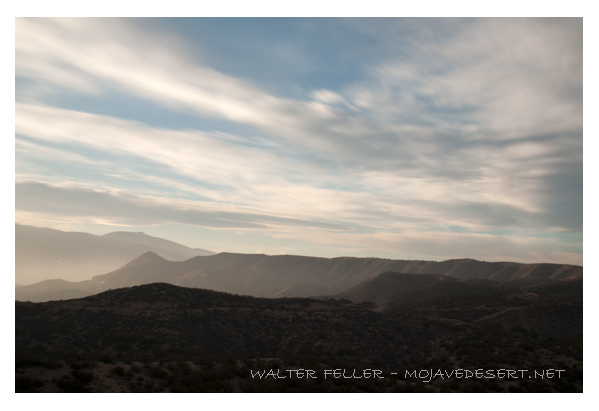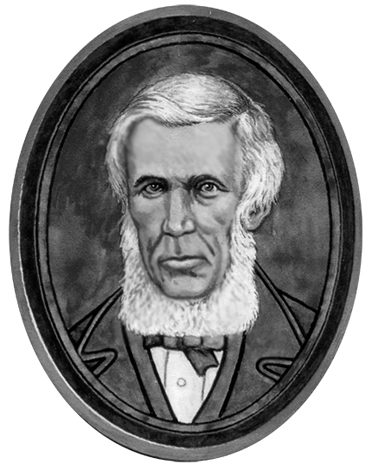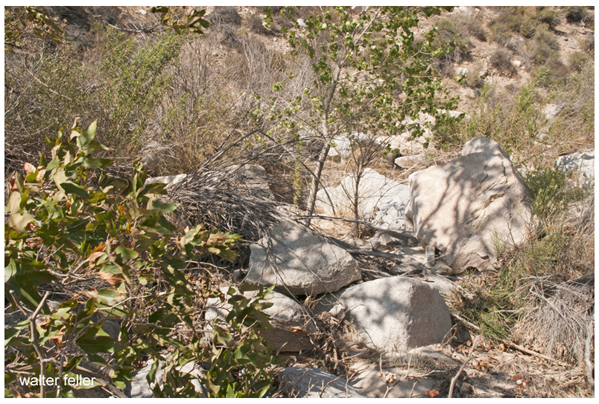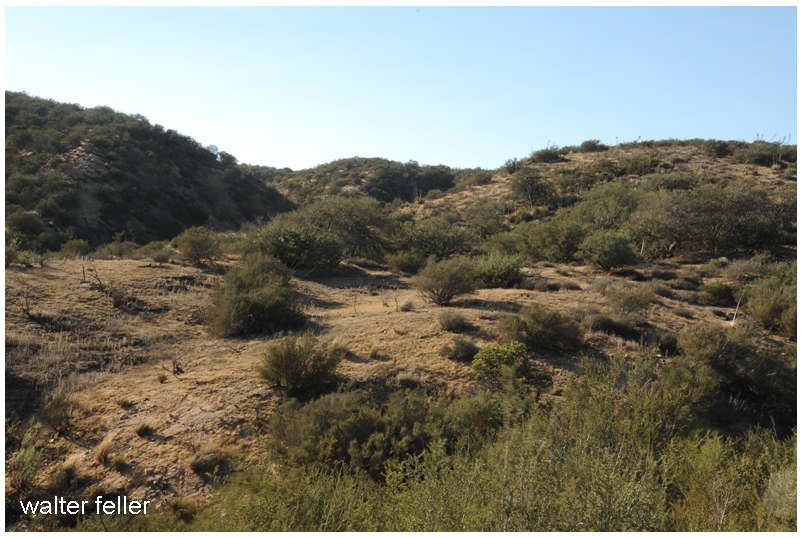There are numerous names of features within the story of the Cajon Canyon complex; Mormon Rocks, Lost Lake, Lone Pine Canyon, and more. There is one canyon, however, the most popular variation of the Old Spanish Trail as it entered southern California was known as Coyote Canyon.


In the early 1840s, Englishman Michael White and William Workman were partners in a store in New Mexico. White sold his part of the business and came west to live on one hundred acres his wife purchased from the Catholic Church. On this property near Mission San Gabriel, Michael White established a home. Indian raids were discouraging, but Mr. White worked on and ultimately succeeded in raising cattle. His herd grew and he looked for range land. Mr. White and two other men made an agreement to help each other raise cattle in the valley northwest of San Bernardino.
The Story of Coyote Canyon
It was near the mouth of the Cajon Canyon where he built his camp. However, the ‘partners’ failed to show up leaving Miguel to his own defense if there were an attack.

One morning Mr. White woke up to find his cattle missing–the culprits most likely were ‘Chaguanosos.’ The Chaguanosos were a band of Indians exiled and cast away from all, the worst of the worst, cast from their own tribes, notorious and deadly in their own right. These men would steal anything and everything and kill anyone that attempted to stop them. These renegades committed many of the raids on the animals of the ranchos. There was Chief Coyote who was known in the area to be cunning, and violent and leading a band of these heartless men.
During the dark of night, the Chief and his thieves drove away over 400 head of Mr. White’s herd. Michael White was alone save for a seventeen-year-old Indian boy. Together, they rode off to attempt to halt the theft. They needed to keep the band of thieves from leaving the Cajon Canyon and entering the Mojave Desert–they had to head them off at the pass.

Mr. White and the Indian boy rode up the canyon, circled around, and came in between the outlaws and the top of the pass. The thieves were unaware as they were greedily feasting on a horse they had killed.

Mr. White thought to stampede the herd back down through the narrows trapping the Chaguanosos from escape.
Michael drew the attention of Chief Coyote. The renegade charged him. Michael aimed and fired. The shot knocked the Chief off of his horse. He fell into the brush. Dead. The gunshot startled the cattle and they stampeded over the camp and back down the canyon surprising those in the camp. There was a gunfight. White would fire his gun and one by one the Chaguanosos fell dead in the canyon. The boy reloaded the extra gun and kept Michael White fighting. Several of the renegades escaped in the dust and confusion.

The stolen animals were rounded up and returned to the glen at the mouth of the Cajon canyon.
Calling the canyon ‘Coyote Canyon’ wasn’t in honor of a great chief. It was simply a ravine where a bad guy was killed. That is how the canyon became known as Coyote Canyon.
However, the story doesn’t end there- The Governor of California heard of this heroic episode and found that Mr. White had no land but desired to. So, Michael White became naturalized as Miguel Blanco, a citizen of Mexico, and received a grant for 32,000 acres (50 square miles) of land northwest of the Lugo Rancho San Bernardino. With this land situated on a high point of the bajada that runs the southwestern base of the San Bernardino mountains, he was to guard and defend the southern California ranchos from further raids from horsethieves.
Of course, the story doesn’t really end there, either- This is the beginning of the story of Miguel Blanco and the Rancho Muscupiabe.
-end-
(c)W.Feller – 2022